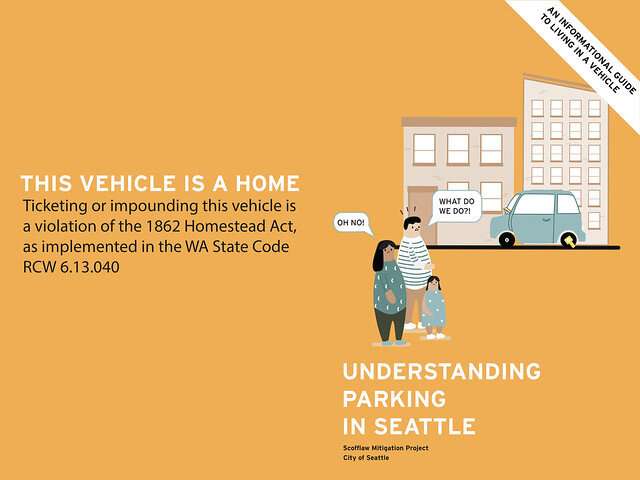The unique circumstances of people who live in their vehicles

From tiny houses to encampment sweeps, from proposed business taxes to small armies of volunteers, Seattle's homeless crisis has sparked a series of possible solutions, along with controversy.
But often missing from conversations about "homelessness," says the University of Washington's Graham Pruss, is attention to people who live in their vehicles.
More than 11,000 people are homeless in Seattle and King County, according to All Home's 2019 point-in-time count. And according to more detailed data released May 31, people who live in a car, truck or camper make up about 40 percent of the nearly 5,300 people who are classified as "unsheltered"—those who are not currently living in emergency shelter or transitional housing.
"We need to recognize that a significant number of people are relying on a vehicle as their long-term primary shelter. But giving them a parking ticket or a simple parking space won't fix this," says Pruss, a doctoral candidate in the UW Department of Anthropology. "By providing inclusive space for parking in our emergency shelter system, with direct access to their wraparound services such as employment assistance and health care, we can address ending homelessness for all, including those sleeping in their vehicles tonight."
Pruss has been researching vehicle residency in Seattle for nearly a decade. He established the Vehicle Residency Research Program at Seattle University, as well as the methodology for counting the vehicle-resident population for All Home's annual point-in-time count, conducted on one night each January. Pruss also contracts as the liaison for the unhoused community for the City of Seattle's Department of Neighborhoods. He will defend his dissertation in June.
With nightly street-parking restrictions in industrial areas and a lack of services and infrastructure for this specific population, people who live in their vehicles are an overlooked community, subject to "settled bias that exposes vehicle residents to social disaffiliation and criminalization," Pruss says. He suggests the city include the vehicle resident population in its emergency shelter and services planning and, where appropriate, create safe parking areas, which would also provide hygiene facilities and direct connections to professional social services.
"Our job is to show that there's an opportunity for stability," Pruss says. "We can't change the agency of the individual who sees their RV as a best choice for affordable housing, but we can offer healthier and more beneficial opportunities to that person and our communities."
Provided by University of Washington



















